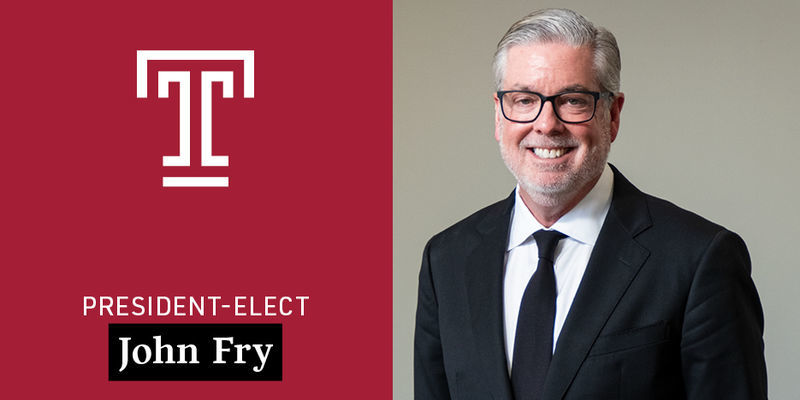Temple University sets tuition rates for the 2024–2025 academic year
The Board of Trustees approves a blended 4.2% increase for both in-state and out-of-state students. To help offset costs for students, the university has also increased its financial aid budget by $35.5 million, which represents a 32% increase.

Temple University’s Board of Trustees approved the university’s operating budget for fiscal year 2024–2025 during its meeting on Tuesday, July 9. The budget includes a blended 4.2% increase for 2024–2025 undergraduate and graduate tuition for both in-state and out-of-state students, and it is applicable across all the university’s academic programs.
The budget includes $44.2 million in new operating revenue with $35.5 million of that revenue directly allocated to financial aid. This represents a 32% increase to the financial aid budget.
“Temple has always been about access, and that is really the driver behind the significant increase in financial aid,” Senior Vice President and Chief Operating Officer Ken Kaiser said. “It is important that we make sure that we are doing all we can to help support incoming students as well as returning students. We believe that this historic increase in financial aid, which will help support programs like the new Temple Promise, will help us accomplish just that.”
With the $35.5 million increase in financial aid, Temple now expects to disseminate nearly $150 million of financial aid to students. This represents approximately 26% of all undergraduate tuition revenue.
The new base tuition rate for this year will now be $9,432 per semester for Pennsylvania residents and $16,956 per semester for non-Pennsylvania residents. Mandatory fees this year will be $508 per term.
One factor behind this year’s blended increase is the fact that the university’s state appropriation is likely to remain flat at $158.2 million for the sixth consecutive year. Each year, the state’s funding from the appropriation is combined with resources provided by the university to provide more than $270 million in tuition support for Pennsylvania residents. As a result of this investment, Temple provides every undergraduate in-state resident with at least a $15,000 annual discount on tuition.
Nearly 16 years ago, during the 2008–2009 fiscal year, Temple’s state appropriation was $175.5 million, and it has never approached that peak level since. According to the U.S. Bureau of Statistics, Temple would need to receive an additional $67.1 million in its appropriation to keep pace with the 2009 appropriation.
“While we are incredibly grateful for the support of our legislators across the commonwealth, the flat funding of the appropriation does present the university with challenges. While it has remained flat, all operating costs, such as utilities, salary/benefits and insurance, have increased,” Kaiser said. “Our operating budget is almost entirely driven by tuition revenue, but we need to make sure that the burden of covering the increasing costs of higher education does not fall entirely to our students. So, in addition to the significant increase in student financial aid, we have once again cut the university’s operating budget.”
Temple will cut its budget by $54 million to help keep its tuition costs down this academic year, and this follows a year in which Temple cut its budget by more than $57 million. Since fiscal year 2021, Temple has now reduced its budget by more than $220 million.
Additional details on Temple’s tuition rates are available at the university’s 2024–2025 tuition rate schedule and can be found by accessing Temple’s tuition calculator at the Bursar’s Office.


